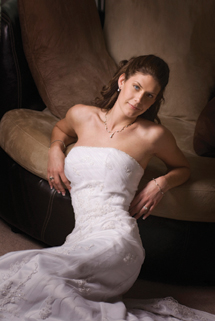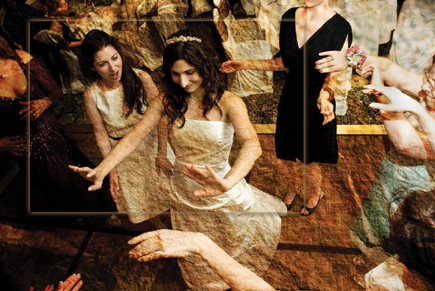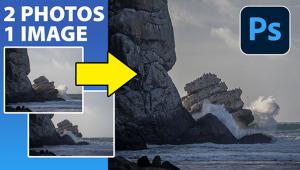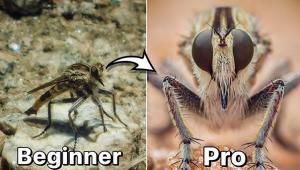The Photography Of Thom Rouse; Where Technician And Artist Meet
The first time I saw some of Thom Rouse's work, I was stunned. It was so artistically and technically excellent I had to stop and study it for a while, just like you do when visiting a gallery. That's why I had to share it with you. Rouse is a portrait and wedding photographer who regards digital photography as not just an advancement of conventional photography but as a whole new medium unto itself. The Illinois photographer has also helped raise the bar in the Professional Photographers of America (PPA) print competition. For those who think the PPA exhibit is basically "salon" work of "Old Salt" characters, think again. Rouse's work has earned him PPA "Diamond" status (all four images in the prestigious Loan Collection) not once but three times! And his 2006 image "Symbol Tree" earned him the American Society of Photographers Gold Medallion Award, which is pretty much the best image in the entire show.
 |
|
|
I asked Rouse to share some of his philosophies and techniques.
Shutterbug: Thom, tell us about your wedding and portrait work.
Thom Rouse: I no longer own a studio--I sold it about
five years ago. I do most of my work on location now and I love it. I used to
hate leaving the studio--now I really appreciate the challenge and new
opportunities of each new location. When I need studio space I rent (or more
often borrow) space. I am also in joint ventures with several studios. I couldn't
bring myself to be an employee again so I have joint venture relationships with
studios to do weddings for those who don't do weddings and high school
seniors for those who don't do seniors. I shoot as a partner without any
overhead and the host studio is responsible for marketing or sales, neither
of which is my strong point, or interest. I just take pictures and realize a
higher net than I ever did as a studio owner.
 |
 |
||
|
|
SB: Your fine art work is a wonderful blend that uses both
sides of the brain. You seem equally adept at the artistic and technical aspects.
Does one come easier to you?
TR: I'm a strong believer that image making requires
using both halves of our brains. The popular emphasis on accessing our "right
brain" is, I'm afraid, often being made by people who have not read
the source literature on the issue. Our brains know what side to use appropriate
to the task our conscious minds ask of them. Obviously, f/stops and shutter
speeds are left-brain issues, but so too is the acquisition of visual literacy
and understanding the rules and concepts that make images successful. We want
the viewers of our images to respond with their right brains--that's
why we make images--because some things are ineffable...they can't
be expressed in words.
 |
|
|
SB: Where do you get the inspiration for your images?
TR: I believe that inspiration comes most often from the unconscious
mind. My inspiration sometimes comes from dreams with very clear and specific
images. I also find that a process called "incubation" seems to
work for me. Sometimes we work very hard and concentrate on a project and nothing
seems to work. Then we mentally set it aside for a while (we incubate), and
suddenly we are struck with inspiration and insight for the project. Seeking
out and critically viewing works of art, movies, comic books, natural scenes,
and almost everything visual contributes to our visual literacy and eventual
inspiration.
 |
 |
|
|
||
SB: How do you try to market your fine art work? Have you
been successful at it?
TR: Selling fine art is all about business and marketing and
it is something I'm working more on now. I'm concentrating on gaining
more gallery representation in a wider geographic area than Chicago. I'd
like to gain representation in several major cities and I'm concentrating
on markets that I think would be most receptive to my work. I'd never
assumed that I could make my entire income solely from fine art sales (very
few artists do), but as time goes on I think it's increasingly possible
that in a few more years fine art will be my principal activity.
 |
|
|

















































